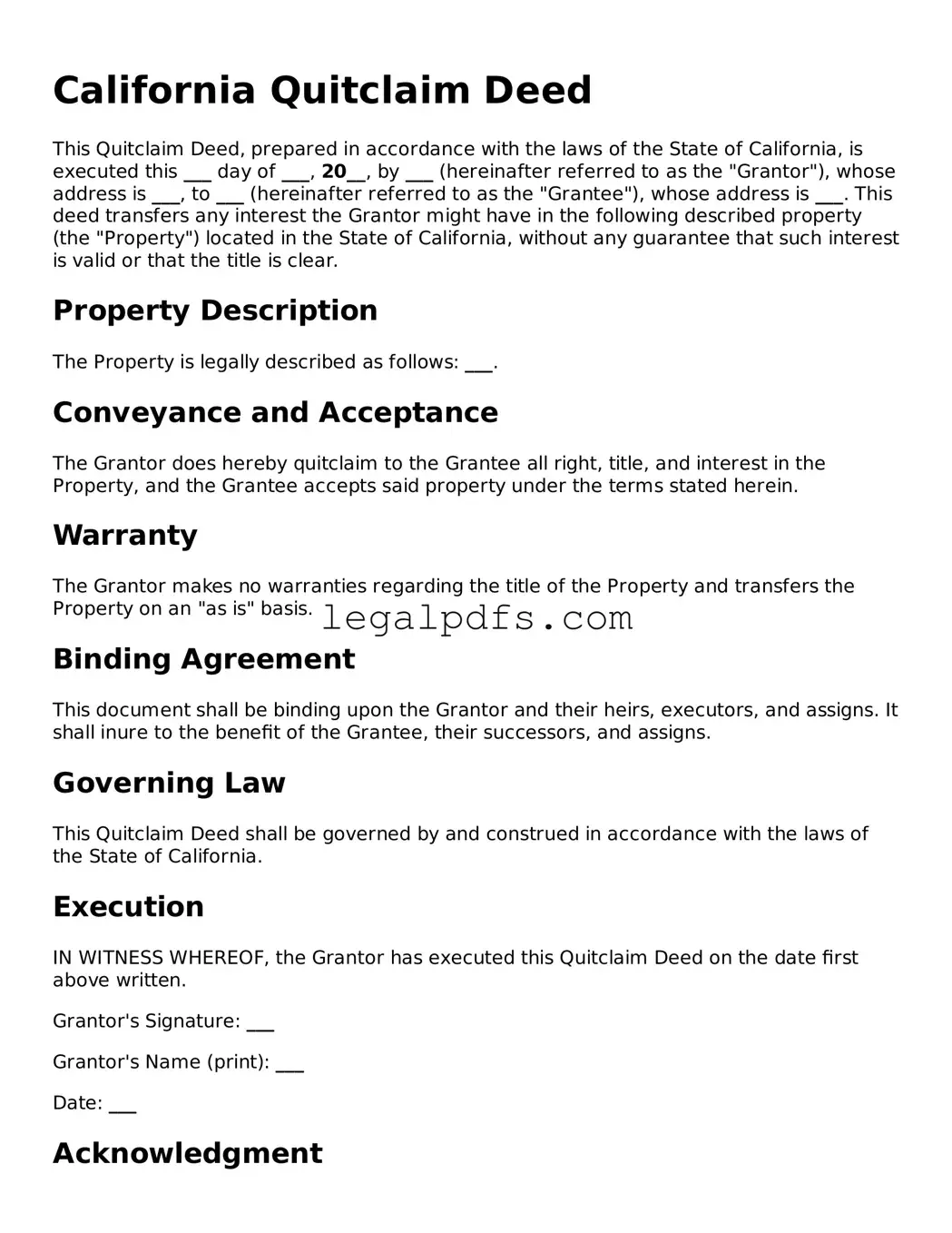California Quitclaim Deed
This Quitclaim Deed, prepared in accordance with the laws of the State of California, is executed this ___ day of ___, 20__, by ___ (hereinafter referred to as the "Grantor"), whose address is ___, to ___ (hereinafter referred to as the "Grantee"), whose address is ___. This deed transfers any interest the Grantor might have in the following described property (the "Property") located in the State of California, without any guarantee that such interest is valid or that the title is clear.
Property Description
The Property is legally described as follows: ___.
Conveyance and Acceptance
The Grantor does hereby quitclaim to the Grantee all right, title, and interest in the Property, and the Grantee accepts said property under the terms stated herein.
Warranty
The Grantor makes no warranties regarding the title of the Property and transfers the Property on an "as is" basis.
Binding Agreement
This document shall be binding upon the Grantor and their heirs, executors, and assigns. It shall inure to the benefit of the Grantee, their successors, and assigns.
Governing Law
This Quitclaim Deed shall be governed by and construed in accordance with the laws of the State of California.
Execution
IN WITNESS WHEREOF, the Grantor has executed this Quitclaim Deed on the date first above written.
Grantor's Signature: ___
Grantor's Name (print): ___
Date: ___
Acknowledgment
This document was acknowledged before me on ___ by ___, who is personally known to me or who has produced identification in the form of ___.
Notary Public Signature: ___
Notary Public Name (print): ___
Commission Expires: ___
